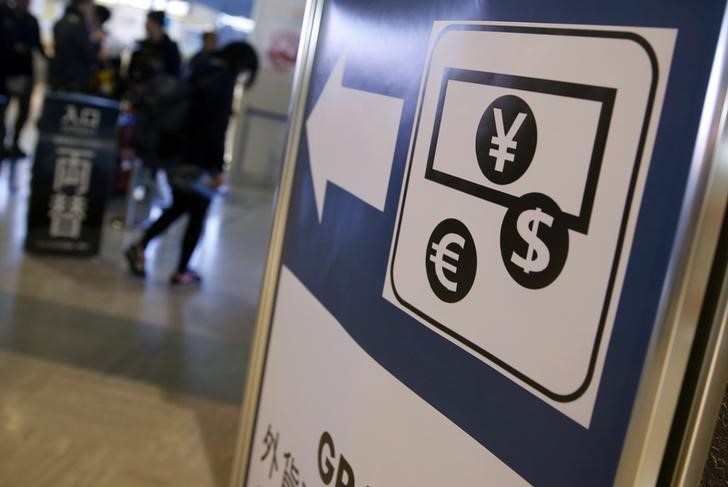Investing.com - The yen soared as the Bank of Japan monetary policy held steady as expected on Thursday at ¥80 trillion annually, and shunned further moves on negative interest rates even as downside risks to a 2% inflation target rise.
USD/JPY changed hands at 109.34, down 1.89%, while AUD/USD traded at 0.7593, down 0.09%.
Expectations of further easing were in place after Bloomberg reported that the BoJ could expand the negative interest rate policy it put in place in January at the conclusion of its rate review.
Earlier in Japan, household spending eased 5.3% year-on-year in March, more than the 4.2% drop expected. As well, national core CPI dropped 0.3% year-on-year for March, more than the 0.2% fall seen even as the unemployment rate dipped to 3.2% from an expected 3.3% level.
Japan also reported provisional industrial production for March month-on-month rose 3.6%, more than the 2.9% gain seen, while retail sales slipped 1.1% year-on-year, less than the 1.5% declined expected.
The Federal Reserve's policy making Federal Open Market Committee left short-term interest rates unchanged Wednesday as expected, but tweaked its policy statement, possibly preparing financial markets for another modest rate hike in coming months.
The FOMC, which started raising the federal funds rate from near zero in mid-December, left the funds rate in a 25 to 50 basis point target range, on a 9-1 vote, as Kansas City Federal Reserve Bank President Esther George dissented in favor of an immediate rate hike for the second straight meeting.
Still, the tone was partly downbeat in the statement.
"Information received since the Federal Open Market Committee met in March indicates that labor market conditions have improved further even as growth in economic activity appears to have slowed. Growth in household spending has moderated, although households real income has risen at a solid rate and consumer sentiment remains high." the Fed said.
After the Fed release, the Reserve Bank of New Zealand left the official cash rate at 2.25% Thursday and signaled further easing may be needed as well as a need to ease upward pressure on the currency.
The RBNZ said “further policy easing may be required to ensure that future average inflation settles near the middle of the target range."
The statement, according to Capital Economics, sets the tone ahead.
"We don’t believe that the slightly more positive tone of the policy statement released after the Reserve Bank of New Zealand (RBNZ) left interest rates on hold at 2.25% today will prevent the Bank from cutting rates to 2.0% at the meeting in June," Capital Economics said in a note to clients.
"What’s more, we think that the RBNZ will have to go one step further and reduce rates to 1.75% later this year."
NZD/USD traded at 0.6919, up 0.52%, after the RBNZ announcement.
The U.S. dollar index, which measures the greenback’s strength against a trade-weighted basket of six major currencies, was down 0.032 at 94.09.
Overnight, the dollar moved lower against the other major currencies on Wednesday, even after data showed that U.S. pending home sales rose more than expected in March.
The National Association of Realtors said its pending home sales index rose by 1.4% last month, beating expectations for a gain of 0.5%. Pending home sales in February advanced 3.4%, whose figure was revised slightly down from a previously reported gain of 3.5%. But investors remained cautious ahead of the Fed’s policy statement amid ongoing uncertainty over the pace and timing of future rate hikes.
